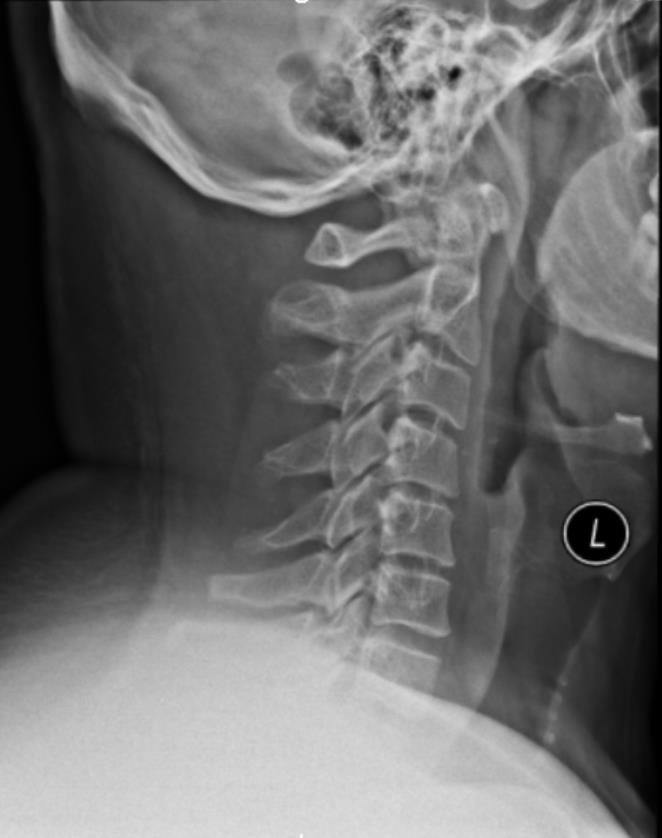Examination Date: 27/12/2018
Initial Exam
Chief Complaints (40 year old Male)
- Bilateral Posterior Neck
Frequent bilateral posterior neck pain. Patient reports insidious onset of the complaint for the past three months. The pain is described as aching and dull. He considers this condition as moderate and rated the pain as an 8 on a scale of 0 to 10 with 10 being the worst. The pain is reduced by resting while neck movement and prolonged sitting aggravates the condition.
Neck Disability Index
The patient was asked to complete the Neck Disability questionnaire. The disability score calculated was 19 out of 50. Their responses are as follows.
The pain is moderate and does not vary much. I can look after myself normally but it causes extra pain. I can lift heavy weights, but it causes extra pain. I can read as much as I want with moderate pain in my neck. I have slight headaches which come infrequently. I have a fair degree of difficulty in concentrating when I want to. I can do most of my usual work, but no more. I can drive my car as long as I want with moderate pain in my neck. My sleep is moderately disturbed (2-3 hours sleepless). I am able engage in most, but not all recreational activities because of pain in my neck.
Physical Examination
Physical examination revealed an individual who was alert, cooperative and orientated.
The patient’s gait appeared normal. Minor’s sign was negative.
Sex: Male
Age: 40
Height: 182 cm
Weight: 122 kg
BMI: 36.8
Complexion: Normal
Size: Overweight
Grip strength: Normal bilaterally.
Posture
There is no indication of a head tilt in the patient’s posture. His shoulder level appeared even bilaterally. There is no evidence of a forward head carriage.
Ranges of Motion
Cervical Spine
Motion Degree Pain Level
Flexion: Moderately Decreased Moderate
Extension: Moderately Decreased Moderate
Lateral Flexion Right: Moderately Decreased Moderate
Lateral Flexion Left: Moderately Decreased Moderate
Rotation Right: Moderately Decreased Moderate
Rotation Left: Moderately Decreased Moderate
Cervical Spine Evaluation
Cervical spine evaluation provided the following results:
Tenderness is observed in the cervical region bilaterally (grade 2). Cervical spine tenderness was noted in the spinous process region at: C4, C5 and C6 (grade 2). Myofascial trigger points are present in the trapezius on both sides (moderate) and levator scapulae muscles on both sides (moderate). The following cervical orthopedic tests were negative: Compression, Foraminal Compression bilaterally and Valsalva’s. There was no change with pain intensity performing the distraction test. Shoulder depression was positive on the left. Shoulder depression was positive on the right. Kemps test caused pain positive for possible facet and meniscoid entrapment. Lateral Shear, Transverse ligament stress and VBI tests revealed no soft end feel, dizziness, nystagmus or nausea.
Diagnostic/X-Ray Requests
The following diagnostic procedures have been ordered by the clinician after medical/clinical necessity has been established:
Radiographs are being ordered to identify any gross pathologies, fractures or joint degeneration, as well as over all alignment of the segment.
X-Ray Analysis
Cervical
The following views were taken: A-P lower cervical, lateral cervical and A-P open mouth. In general there were no fractures, dislocations or osseous blastic/lytic lesions. There is complete loss of the cervical lordosis. Normal vertebral height and preserved disc space is noted. .
Impression
Loss of lordotic curvature.
Diagnosis
S1348 Other sprain and strain of cervical spine
Subacute, moderate traumatic joint and muscle dysfunction in the above region with associated symptoms of pain, ROM reduction and functional difficulties.
Management Plan
Short Term Goals would be for patient to report 50% pain reduction and 50% increase in ROM within 2 weeks. Functionally patient should also be able to perform half of his ADL’s within these 2 weeks easier. Long Term Goals would be for patient to report over 80% pain reduction and demonstrate over 80% increase in ROM within 4 to 6 weeks. Functionally patient should also be able to perform most of his ADL’s within this period. Patient is also to be discharged with a home exercise program when the above goals have been achieved and he is over 80-90% impairment free.
Today’s Treatments
Today’s treatment consisted of Simply Align Technique which consists of Laser Physiotherapy, Radio-Frequency Physiotherapy, and Pulsewave Physiotherapy.
Prognosis
The prognosis for improvement of the patient’s condition is considered good.
Follow Up date: 31/12/2018
Three treatments later patient reported much less pain 3/10 on VAS. His Neck Disability Index score reduced to 9 from 19/50. ROM in the cervical also improved.

